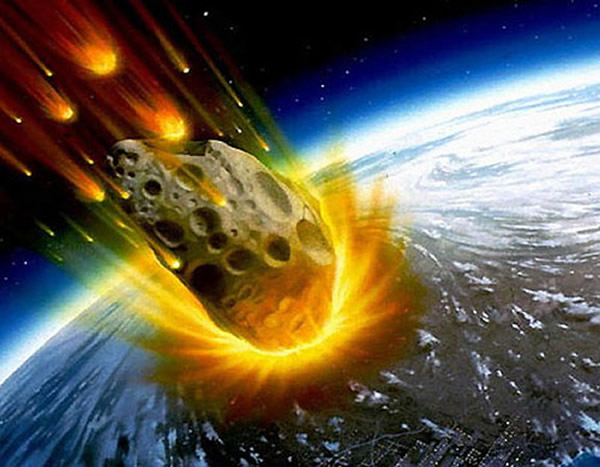The few craters that remained evident on Earth (most had been eroded away) were generally attributed to other causes or treated as fluky rarities.
一般來說,地球上僅有的幾個明顯的坑(大多數已經被侵蝕干凈)要么被歸于別的原因,要么被視為罕見現象。
By the time Shoemaker came along, a common view was that Meteor Crater had been formed by an underground steam explosion. Shoemaker knew nothing about underground steam explosions—he couldn't: they don't exist—but he did know all about blast zones. One of his first jobs out of college was to study explosion rings at the Yucca Flats nuclear test site in Nevada. He concluded, as Barringer had before him, that there was nothing at Meteor Crater to suggest volcanic activity, but that there were huge distributions of other stuff— anomalous fine silicas and magnetites principally—that suggested an impact from space. Intrigued, he began to study the subject in his spare time.
到蘇梅克前來考察的時候,人們普遍認為隕石坑是由一次地下蒸氣噴發形成的。蘇梅克對地下蒸氣噴發的事兒一無所知——他也無法知道:這種事兒并不存在——但是,他對爆炸地區的事兒知道得很多。大學畢業之后,他的第一項工作就是考察內華達州的尤卡弗萊茲核試驗場的爆炸地區。他得出了與此前巴林杰得出的同樣結論,隕石坑毫無火山活動的跡象,倒是有大量別的東西——主要是古怪而細微的硅石和磁鐵礦石——表明撞擊來自太空。他產生了極大興趣,開始在業余時間研究這個問題。

Working first with his colleague Eleanor Helin and later with his wife, Carolyn, and associate David Levy, Shoemaker began a systematic survey of the inner solar system. They spent one week each month at the Palomar Observatory in California looking for objects, asteroids primarily, whose trajectories carried them across Earth's orbit.
蘇梅克起初與同事埃莉諾·赫林合作,后來又與他的妻子卡羅琳和助手戴維·列維合作,開始對太陽內部作系統研究。他們每個月花一周時間在加利福尼亞州的帕洛馬天文臺,尋找運行路線穿越地球軌道的物體,主要是小行星。
At the time we started, only slightly more than a dozen of these things had ever been discovered in the entire course of astronomical observation, Shoemaker recalled some years later in a television interview. "Astronomers in the twentieth century essentially abandoned the solar system," he added. "Their attention was turned to the stars, the galaxies."
“剛開始的時候,在整個天文觀察過程中只發現了10來個這種東西,”幾年后蘇梅克在一次電視采訪中回憶說,“20世紀的天文學家基本上放棄了對太陽系的研究,”他接著說,“他們把注意力轉向了恒星,轉向了星系。”












